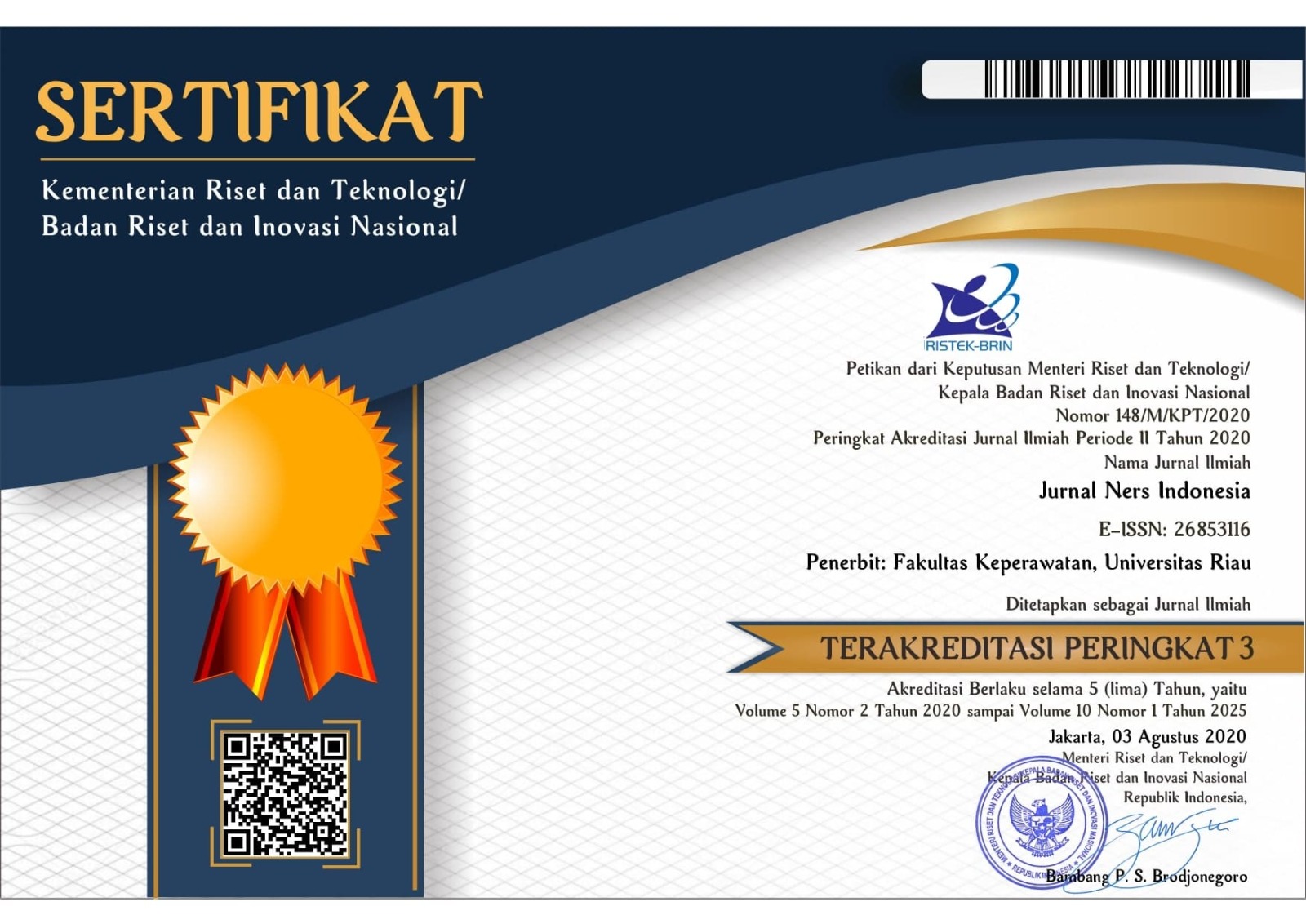PENGALAMAN PEREMPUAN MENGGUNAKAN MENSTRUAL HYGIENE PRODUCTS
Keywords:
Menstruation, Menstrual Sanitary, Menstrual Hygiene Management, ExperienceAbstract
Menstrual hygiene products are hygiene tools used to hold menstrual blood. The variety of menstrual hygiene products options available to women each have their advantages and disadvantages. Experiences related to the choice, comfort, and aspects associated with using menstrual sanitary products are still very limited. This research explores women's experiences in using menstrual hygiene products using a qualitative phenomenological approach. There were 7 participants with diverse ages ranging from 13 to 45 years old, representing various ethnicities, and using both disposable and reusable pads. Data collection was conducted through interviews and field notes. The data analysis, using the Colaizzi method, resulted in three main themes: 1) Physical and situational discomfort in using sanitary pads, women tend to experience discomfort, both physically and situationally, when using both disposable and reusable menstrual pads; 2) Efforts in selecting and using comfortable menstrual pads, efforts made include switching between brands or types of menstrual pads used; 3) Hygiene behaviors during menstruation, women maintain personal hygiene by taking regular showers and disposing of used menstrual pads in trash bins. Comprehensive education on menstrual hygiene can prevent and reduce negative experiences for women during menstruation. A holistic approach and involvement from various parties are needed to create a healthy and comfortable menstrual hygiene environment for every woman.
References
Adyani, K., Meiranny, A., & Muthahar, A. A. E. (2023). Personal Hygiene Remaja Saat Menstruai: Literature Review. The Indonesian Journal of Health Promotion, 6(3), 404–409.
Banappagoudar, S. B., Kripa, N., Kanna, R. K., & Kurian, N. K. (2021). Anti-Bacterial Sanitary Napkin Using Biomaterial Application. 8(4), 12254–12263.
Budhathoki, S. S., Bhattachan, M., Castro-sánchez, E., Sagtani, R. A., Rayamajhi, R. B., Rai, P., & Sharma, G. (2018). Menstrual hygiene management among women and adolescent girls in the aftermath of the earthquake in Nepal. 1–8.
Choi, H., Lim, N., Jung, H., Kim, O., & Park, H. (2021). Perspectives Use of Menstrual Sanitary Products in Women of Reproductive Age : Korea Nurses ’ Health Study. 12(1), 20–28.
Cresswel, J. W. (2014). Research Design: Qualitative, Quantitative, and Mixed Method Approaches. SAGE.
Haryani, S. (2021). Studi Kualitatif Praktik Kesehatan Selama Menstruasi Pada Siswi MTS 01 Pondok Pesantren Darussalam. 3, 1–12. https://doi.org/10.33088/jkr.v3i1.619
Id, H. R., Id, K. H., Kaliwo, T., Tilley, E. A., Oliver, D. M., & Quilliam, R. S. (2020). Examination of Menstrual Waste Management in Urban Malawi. 1–15. https://doi.org/10.1371/journal.pone.0235339
Kaur, R., Kaur, K., & Kaur, R. (2018). Menstrual Hygiene, Management, and Waste Disposal: Practices and Challenges Faced by Girls/Women of Developing Countries. Journal of Environmental and Public Health, 2018. https://doi.org/10.1155/2018/1730964
Pokhrel, D., Bhattarai, S., Emgård, M., Schickfus, M. Von, Forsberg, B. C., & Biermann, O. (2021). Acceptability and feasibility of using vaginal menstrual cups among schoolgirls in rural Nepal : a qualitative pilot study. Reproductive Health, 1–10. https://doi.org/10.1186/s12978-020-01036-0
Puspita, A. (2020). HUBUNGAN PENGETAHUAN SISWI DENGAN MINAT DALAM PEMILIHAN PEMBALUT KAIN. 1–8.
Putra, M. G. B. A. (2019). Perilaku Memilih Produk Pembalut Wanita Antara Ibu Dengan Remaja Putri Ditinjau dari Status Pernikahan dan Tingkat Pendidikan. Journal.Unair.Ac.Id.
Ricci, S. S. (2016). Essentials of Maternity, Newborn, And Women’s Health Nursing (4th ed.). Wolters Kluwer.
Sumpter, C., & Torondel, B. (2013). A Systematic Review of the Health and Social Effects of Menstrual Hygiene Management. 8(4). https://doi.org/10.1371/journal.pone.0062004
The World Bank. (2022). Menstrual Health and Hygiene. The World Bank: Understanding Poverty. https://www.worldbank.org/en/topic/water/brief/menstrual-health-and-hygiene
Tshomo, T., Gurung, M. S., Shah, S., Gil-cuesta, J., Maes, P., & Saunders, P. (2021). Menstrual Hygiene Management — Knowledge , Attitudes , and Practices Among Female College Students in Bhutan. 3(August). https://doi.org/10.3389/frph.2021.703978
UNICEF. (2019). Menstrual Health and Hygiene (P. Poirier (ed.); 1st ed.).
UNICEF. (2020). Guide to menstrual hygiene materials.
Wardani, W., & Latifah, M. (2022). Pendidikan Kesehatan Tentang Hygiene Saat Menstruasi Di Sma Negeri 1 Kota Padangsidimpuan Tahun 2022. Jurnal Pengabdian Masyarakat Darmais (JPMD) , 1(2), 1–18.
Downloads
Published
How to Cite
Issue
Section
License
Copyright (c) 2024 Masrina Munawarah Tampubolon, Nurhannifah Rizky Tampubolon, Karina Rizky Amelia

This work is licensed under a Creative Commons Attribution 4.0 International License.











